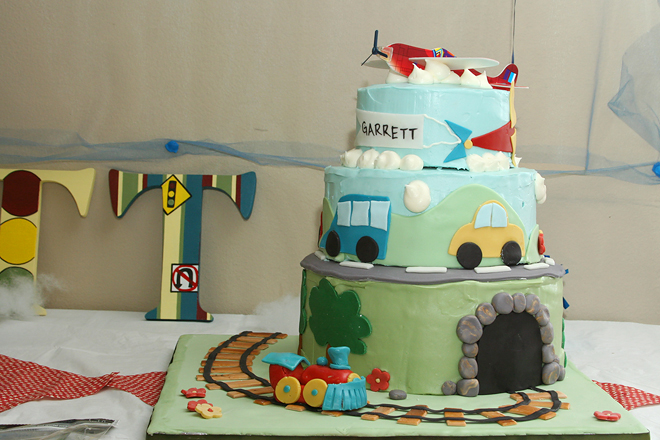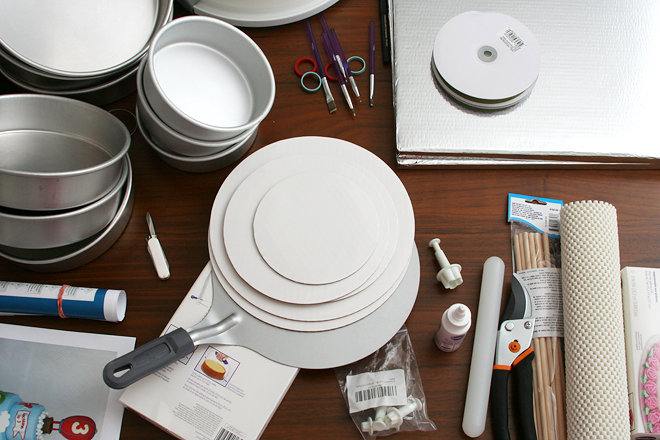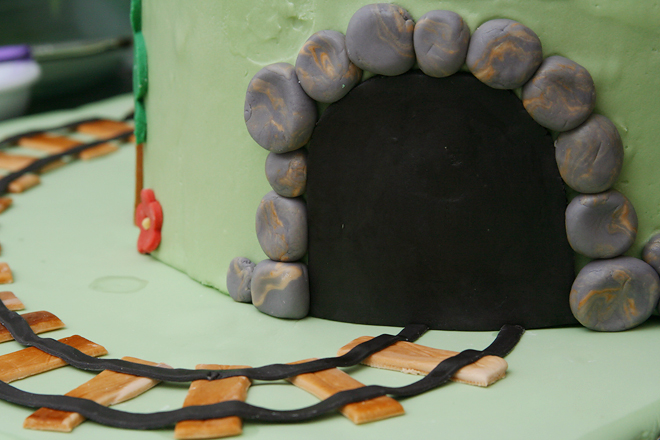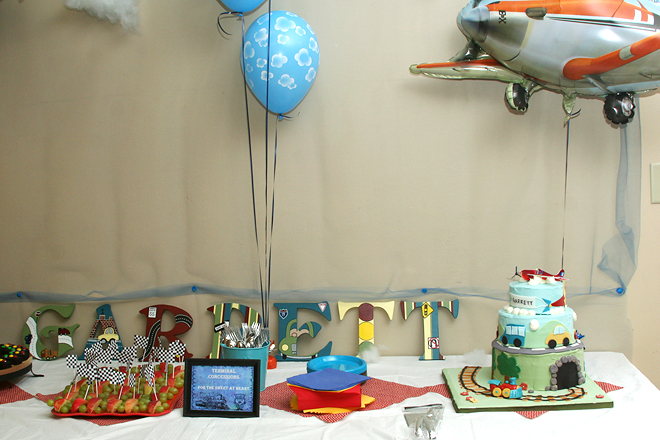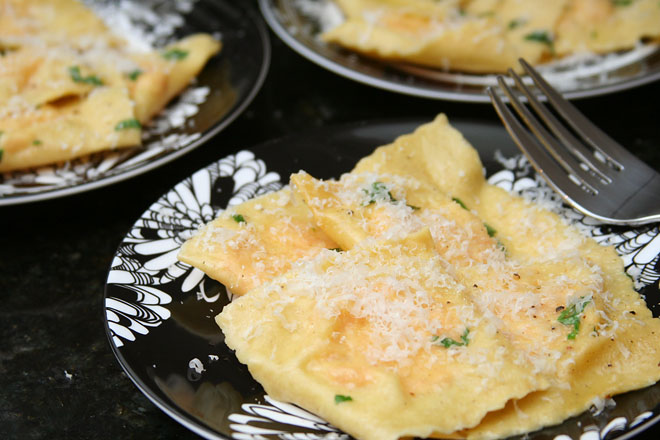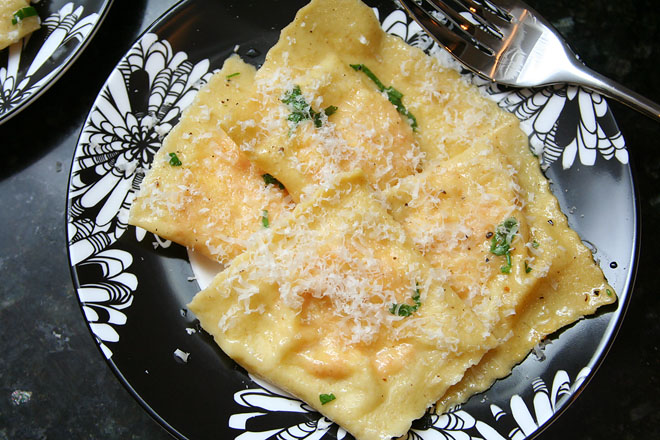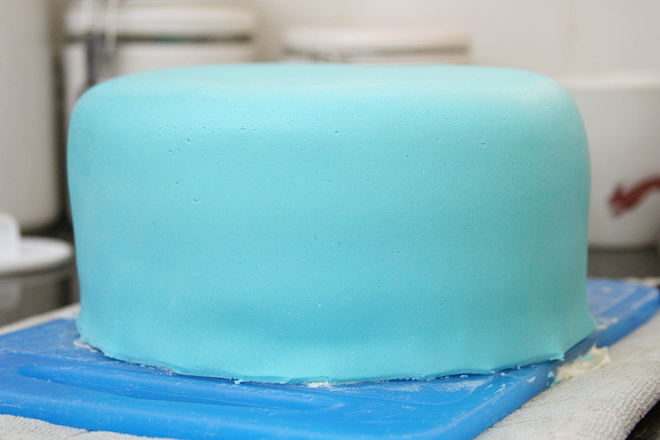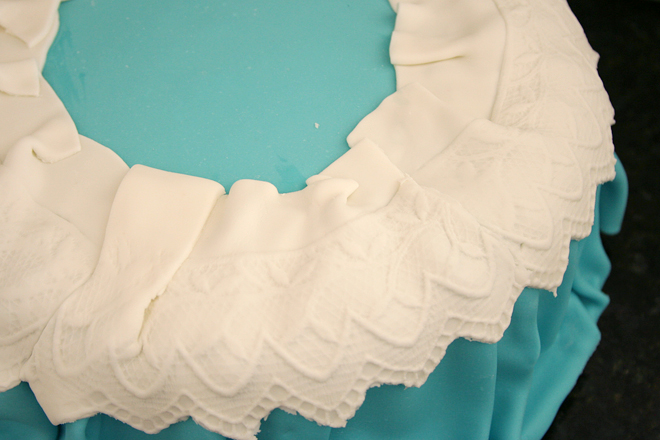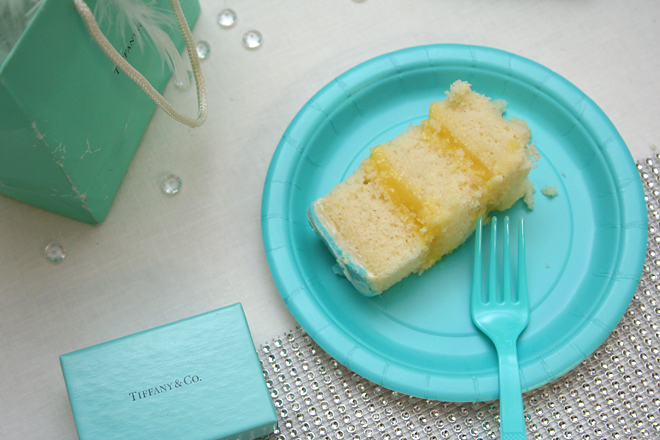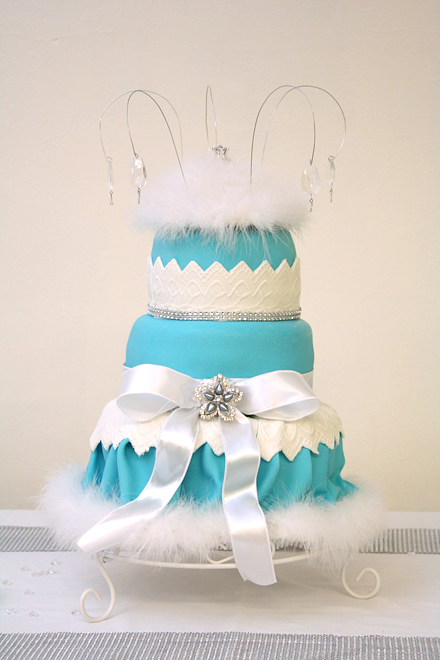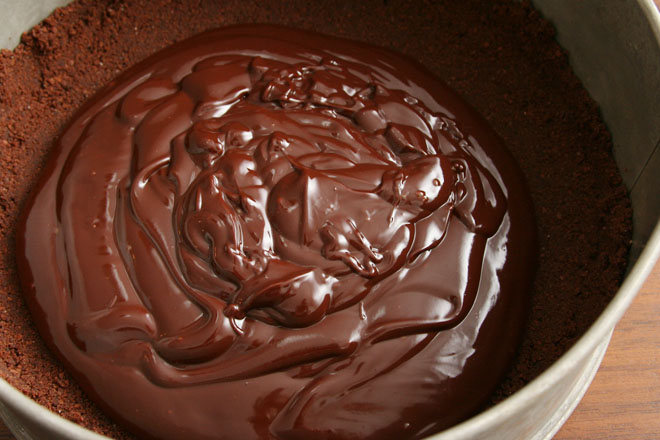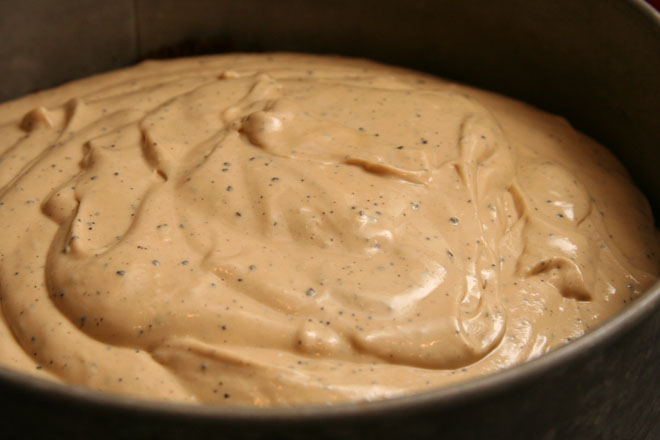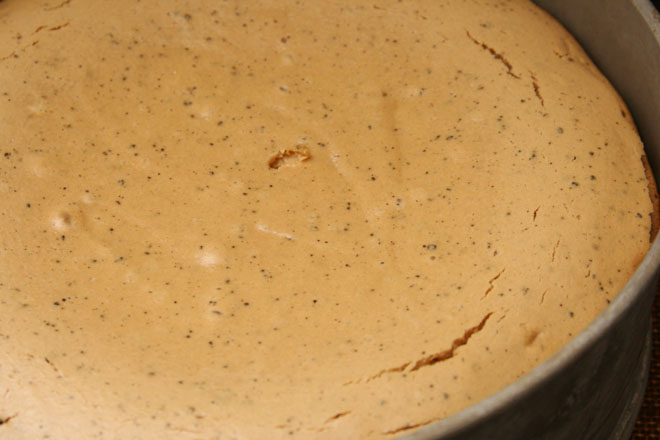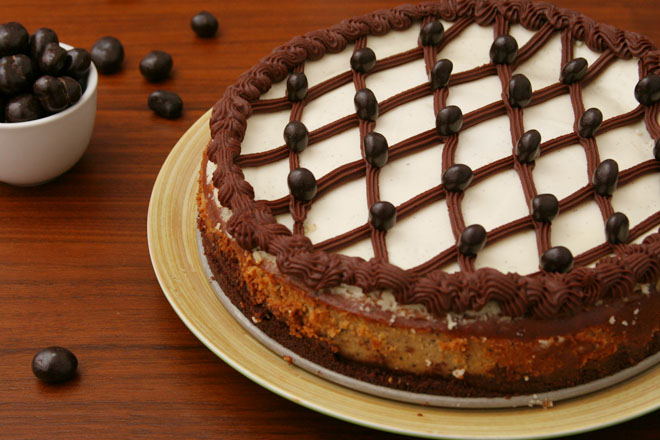I’ve been plastering pictures of this cake on all of my social media outlets, and I’m starting to feel like quite the attention whore, but I’m just so dang proud of it. The decorations are cute; the buttercream is smooth; the tiers are centered. The railroad tracks have wood grain! And then, someone at the shower told me it was the best cake she’d ever eaten.
Not only that, but there were no tears in the making of this cake. There was certainly struggle, and there wasn’t as much sleep as I would have liked, and I was sore the next day from all the fondant-kneading, but it was overall a much smoother process than the last fancy cake I made.
The recipes were all familiar to me, so that helped. I keep meaning to do a comparison of vanilla cakes, but in the meantime, this one has always served me well, so I made that for the bottom layer. The middle was my favorite red velvet cake, and the top was a coconut cake I made years ago. People raved about the coconut cake more than either of the others, which was a surprise to me. The host and I had chose it for the smallest tier because coconut can be polarizing; either you love it or you hate it.
The cake gets a lot of its flavor from cream of coconut, which seems to me to be the coconut equivalent of sweetened condensed milk. It’s very rich, and very sweet. You can use it to make a calorie-buster of a piña colada, which is maybe why it’s usually sold in the drink section. It also makes great cake – the best cake some people have ever eaten, and the best cake I’ve ever decorated.
Coconut Cake (from Cook’s Illustrated)
1 large egg plus 5 large egg whites
¾ cup cream of coconut
¼ cup water
1 teaspoon vanilla extract
1 teaspoon coconut extract
2¼ cups cake flour (9 ounces), sifted
1 cup granulated sugar
1 tablespoon baking powder
¾ teaspoon table salt
12 tablespoons unsalted butter (1½ sticks), cut into 12 pieces, softened, but still cool
1. Adjust oven rack to lower-middle position and heat oven to 325 degrees. Grease two 9-inch round cake pans with shortening and dust with flour.
2. Beat egg whites and whole egg in large measuring cup with fork to combine. Add cream of coconut, water, vanilla, and coconut extract and beat with fork until thoroughly combined.
3. Combine flour, sugar, baking powder, and salt in bowl of standing mixer fitted with paddle attachment. Mix on lowest speed to combine, about 30 seconds. With mixer still running on lowest speed, add butter 1 piece at a time, then beat until mixture resembles coarse meal, with butter bits no larger than small peas, 2 to 2½ minutes.
4. With mixer still running, add 1 cup liquid. Increase speed to medium-high and beat until light and fluffy, about 45 seconds. With mixer still running, add remaining 1 cup liquid in steady stream (this should take about 15 seconds). Stop mixer and scrape down bowl with rubber spatula, then beat at medium-high speed to combine, about 15 seconds. (Batter will be thick.)
5. Divide batter between cake pans and level with offset or rubber spatula. Bake until deep golden brown, cakes pull away from sides of pans, and toothpick inserted into center of cakes comes out clean, about 30 minutes (rotate cakes after about 20 minutes). Do not turn off oven.
6. Cool in pans on wire racks about 10 minutes, then loosen cakes from sides of pans with paring knife, invert cakes onto racks and then re-invert; cool to room temperature.
7. While cakes are cooling, spread shredded coconut on rimmed baking sheet; toast in oven until shreds are a mix of golden brown and white, about 15 to 20 minutes, stirring 2 or 3 times. Cool to room temperature.
